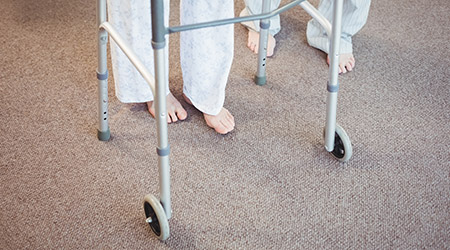Did you know that your carpets can hold as much as four times their weight in dirt, and possibly even more? Carpets are a catch-all for dirt, with dust mites, dead skin cells, dust, insect feces, insect husks, bacteria, mold, volatile organic compounds, and many other types of allergens clinging to the fibers.
Some building service contractors or carpet and rug cleaning companies state they disinfect carpet because they use a disinfectant that is EPA-registered for disinfecting carpet. In my professional opinion, disinfecting carpet is a unicorn; it is a myth. No professional carpet cleaning process or product can meet the definition of “disinfected carpet.”
Yes, the disinfectant label must have a carpet (porous) claim on it such as some disinfectant manufacturers do.
However, just like hard non-porous surfaces, the carpet must be thoroughly cleaned before applying a carpet disinfectant product. A soiled surface cannot be disinfected or sanitized, right? Otherwise, the soil insulates the carpet fibers from the active ingredients in the disinfectant.
Just because you can buy a chemical disinfectant with a "Carpet" claim on the label does not mean carpets can be disinfected. Disinfectants are tested with 5 percent soil load to get their kill claims. Unless a carpet is brand new, I believe every carpet exceeds 5 percent soil load after being thoroughly vacuumed and hot water extracted.
Carpet is porous, making it less hospitable to pathogenic organisms than non-porous surfaces. Carpet cannot be disinfected; it can only be thoroughly cleaned. When it is important to leave the carpet healthier for humans, it is important that the HVAC in the building is running. Use only products that have a near-neutral pH, that are recommended by the Carpet and Rug Institute, and that are on the EPA’s List N, Disinfectants for Coronavirus (COVID-19)
Here are the steps for properly cleaning carpet:
Step 1: Remove Loose Soil
- Remove any gross film (gum, tar, paint, etc.) with appropriate chemistry.
- Use freezing products rather than solvent-based products.
- Vacuum to remove loose soil.
- Use a dual motor upright vacuum with a high-efficiency particulate air (HEPA) filtration system. Change filters according to the manufacturer’s recommendations to avoid transferring pathogens from site to site.
Step 2: Deep Clean
- Pre-spray and allow the product to dwell to loosen soil according to the instructions on the label.
- Use pre-sprays that have Carpet and Rug Institute or equivalent certification.
- Use the appropriate pH pre-spray for the type of soiling present.
- Agitate using a vertical counter-rotating, dual or triple brush machine while damp to further release soil and suspend it for extraction.
- Do not use encapsulants, foam cleaners, or dry carpet cleaners. Encapsulants and foam cleaning are not recognized as deep cleaning systems by CRI. While dry cleaning is recognized as a deep cleaning method, it leaves behind dry particulates in the carpet that can become airborne if not vacuumed properly. The goal of deep cleaning is to remove particulates that may become airborne.
Step 3: Sanitize
- While carpet is still damp from the pre-spray, rinse the carpet with hot water extraction using an appropriately diluted disinfectant that is on the EPA’s List N and recommended by the Carpet and Rug Institute.
- Read and follow the manufacturer’s instructions.
- Extract carpet until water runs clear.
- Allow the disinfectant to dwell according to the manufacturer's instructions.
- Allow the carpet to dry without supplemental blowers, which may prematurely dry the carpet before the appropriate dwell time is reached.
Remember, disinfecting carpets is a myth. But we can make carpet healthier by using the right products and processes.

 Grounding Healthcare Spaces in Hospitality Principles
Grounding Healthcare Spaces in Hospitality Principles UC Davis Health Selects Rudolph and Sletten for Central Utility Plant Expansion
UC Davis Health Selects Rudolph and Sletten for Central Utility Plant Expansion Cape Cod Healthcare Opens Upper 2 Floors of Edwin Barbey Patient Care Pavilion
Cape Cod Healthcare Opens Upper 2 Floors of Edwin Barbey Patient Care Pavilion Building Sustainable Healthcare for an Aging Population
Building Sustainable Healthcare for an Aging Population Froedtert ThedaCare Announces Opening of ThedaCare Medical Center-Oshkosh
Froedtert ThedaCare Announces Opening of ThedaCare Medical Center-Oshkosh